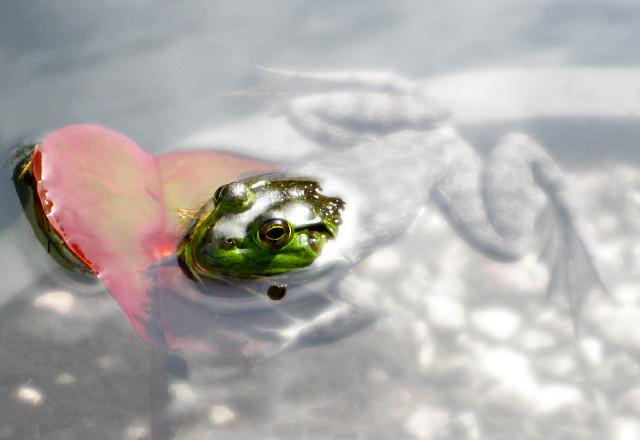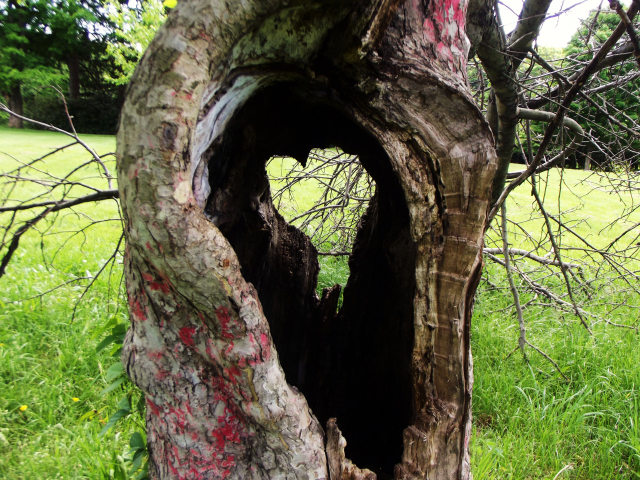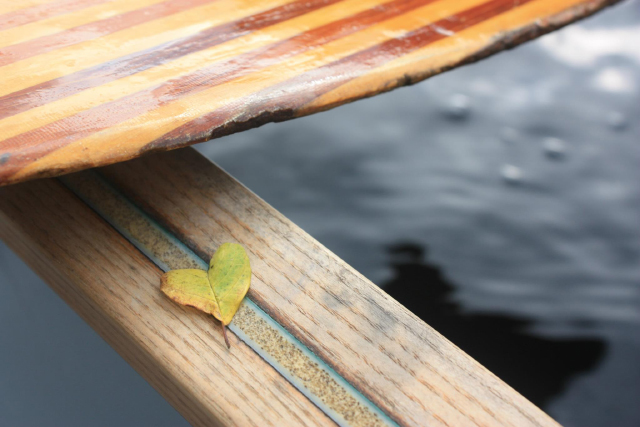How do animals that lack thick fluffy fur, such as frogs or insects, survive the winter? No matter how high the snow piles up, these creatures still somehow manage to appear in abundance in the spring. Here’s where they are right now.
Frogs
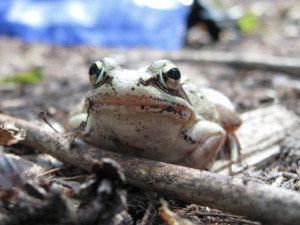
Wood frog (Lithobates sylvaticus)
Take a look at a frozen pond or forest floor. Believe it or not, frogs abound. Some, such as American bullfrogs, sit on the mud at the bottom of their ponds. Contrary to popular belief, they don’t bury themselves completely, since they need to absorb the water’s oxygen with their skin.
Others stay on land, hiding in crevices or burrowing underground. Wood frogs have a potent natural antifreeze and can survive temperatures as low as -20°F. Learn more about frogs
Bees
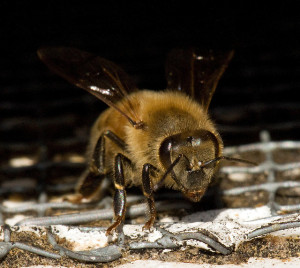
European honeybee (Apis mellifera) by Flickr user e_monk
Those flower visitors are alive and well—just hidden. They overwinter in sheltered places such as under logs, inside dried stems, or in underground burrows. For most social bees—those that form colonies—only the fertilized queens live through the winter.
Come spring, they’ll give birth to a whole new crowd of workers to build and care for the hive. European honeybees are the exception. The whole colony stays alive all winter, with individuals grouping together and vibrating their muscles to stay warm. They constantly move so that the warmest bees from the inside of the cluster switch places with the colder bees on the outside. Learn more about bees
Butterflies and Moths
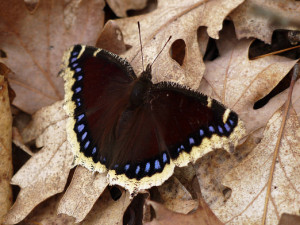
Mourning cloak (Nymphalis antiopa)
Monarch butterflies famously fly south in the fall, but most of our local moths and butterflies stay put. So where are they? The adults of many species are long gone, but their offspring are safely tucked away in nooks and crannies.
They may overwinter as eggs, caterpillars, or pupae (in protective cocoons or chrysalises). Incredibly, some fully-fledged adults do persist. Mourning cloak butterflies, for example, find sheltered places, often under tree bark. Like many insects, they produce natural antifreeze-like chemicals that help them avoid the damaging effects of ice. Learn more about butterflies
Turtles
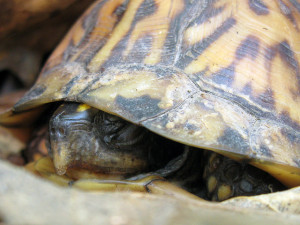
Eastern box turtle (Terrapene carolina)
Surface-dwelling turtles such as eastern box turtles hibernate in shallow burrows. Aquatic turtles may burrow into mud. Why don’t they suffocate? Their bodily processes slow down dramatically so that they need less oxygen.
Also, they are able to “breathe at both ends,” absorbing this important gas through their throats and anuses. As the weather warms, turtles slowly emerge, basking in the sunlight when it’s warm enough. Visit a pond on the first bright days of spring and you’ll see them soaking up the rays. Learn more about turtles


